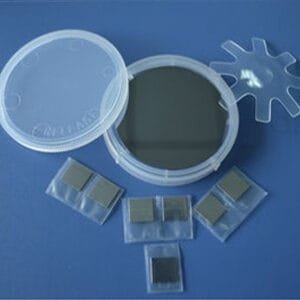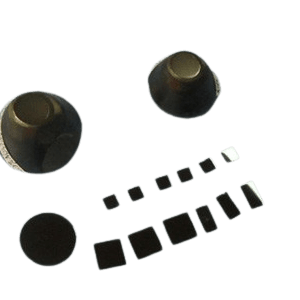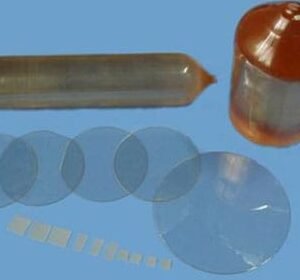Overview of Indium Arsenide Wafer (InAs)
Indium Arsenide (InAs) single crystals serve as a high-quality substrate material for fabricating InAsSb/InAsPSb materials, used in infrared light-emitting devices. These wafers are critical in gas detection and low-loss fiber communication. Furthermore, due to their high electron mobility, InAs crystals are ideal for manufacturing Hall devices, offering significant application potential in various advanced technologies.
Physical Properties of Indium Arsenide Wafer (InAs)
- Material: InAs
- Growth Method: LEC (Liquid Encapsulated Czochralski)
- Lattice Constant: a = 6.058 Å
- Structure: M3
- Melting Point: 942°C
- Density: 5.66 g/cm³
- Doped Materials: Undoped, Sn-doped, S-doped, Zn-doped
- Type: N, N, N, P
- Carrier Concentration:
- Undoped: 5 x 10¹⁶ cm⁻³
- Sn-doped: (5-20) x 10¹⁷ cm⁻³
- S-doped: (1-10) x 10¹⁷ cm⁻³
- Zn-doped: (1-10) x 10¹⁸ cm⁻³
- Mobility:
- Undoped: ≥ 2 x 10⁴ cm²/V·s
- Sn-doped: 7000-20000 cm²/V·s
- S-doped: 6000-20000 cm²/V·s
- Zn-doped: 100-400 cm²/V·s
- EPD (Average): < 5 x 10⁴/cm²
Specifications of Indium Arsenide Wafer (InAs)
- Size: Available in 2″ Dia, 3″ Dia, 4″ Dia (custom sizes available upon request)
- Thickness: 500 µm, 600 µm, 800 µm (Tolerance: ±25 µm)
- Polished: SSP or DSP
- Orientation: <100>, <111>
- Redirection Precision: ±0.5°
- Primary Flat Length: 16±2 mm, 22±2 mm, 32.5±2 mm
- Secondary Flat Length: 8±1 mm, 11±1 mm, 18±1 mm
- TTV (Total Thickness Variation): <10 µm
- Bow: <10 µm
- Warp: <15 µm
Packaging of Indium Arsenide Wafer (InAs)
Indium Arsenide wafers are carefully packaged in a class 100 clean bag or wafer container within a class 1000 clean room environment to ensure optimal cleanliness and prevent contamination.





Reviews
There are no reviews yet.